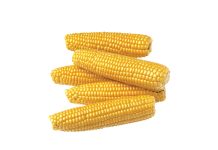
Corné Louw
Applied Economics and Member Services lead, Grain SA,
corne@grainsa.co.za
Ikageng Maluleke
agricultural economist, Grain SA,
ikageng@grainsa.co.za
The COVID-19 pandemic started a chain of events in 2020 that escalated into a perfect storm that now threatens economies worldwide. Over the past two years, the economy has been fluctuating within an environment of a resurgence of cases and recurring lockdowns, while trying to recover.
Significant increases in crude oil prices and fertiliser in 2021 do not bode well for any producer. Price increases in international inputs were due to various reasons, including crude oil and gas price increases, trade wars, logistical challenges with shipping and cargo containers, natural disasters, pollution laws and shortages of specific energy resources used in the manufacturing process of inputs.
The Brent crude oil price increased by 102% in dollar terms from October 2020 to October 2021, while it increased by 82% in rand terms. In line with these increases, the diesel price increased by 27% in the same period. Because many of a grain and oilseed producer’s production inputs are affected by energy prices, the increase in crude oil prices has also caused some of the international input prices to increase significantly. However, due to the strengthening of the exchange rate, there was a bit of a cushion for local prices.
Table 1 shows the price movements of some of the most important economic and input price indicators in 2021.

***Percentage difference between rates (percentage points) and not percentage change.
Rise in the producer price index
The producer price index (PPI) indicates the price increases of goods and services at the wholesale or manufacturing level in the economy. On an annual basis, this index rose by 8,1% until October 2021. The PPI for agriculture increased by 8,6% year on year, while the PPI for grain products increased by 7,5%.
Consumer price index
The official inflation rate is calculated based on changes in the consumer price index (CPI) and indicates cost changes at the retail or consumer level. The inflation rate rose by 5% year on year in October 2021.
Food inflation rose by 6,7% over the same period. In this basket of food, bread and cereals increased by 3%, while meat increased by 9,1%. Oils and fats increased by 20,9%, while vegetables increased by 7,2% over the same period and fruits decreased by 2,3%.
Exchange rate
In Table 1, a strengthening of the value of the rand against other currencies is indicated as a positive change, while a weakening is shown as a negative percentage change. The rand strengthened by 9,8% against the dollar and 4,8% and 11,1% against the pound and euro respectively on an annual basis until October 2021.
Because South Africa is so dependent on imports of inputs, a stronger rand has cushioned some of the sharp increases that were experienced in international markets.
Interest rates
Annually until October 2021, the Reserve Bank maintained the repo rate at 3,5%, while commercial banks also maintained the prime lending rate at 7%.
International crude oil prices
The average Brent crude oil price increased by 102% from $41,39 per barrel to $83,66 per barrel from October 2020 to October 2021. The crude oil price in rand terms increased by 82% to R1 241,50/barrel on an annual basis until October 2021.
Fuel price
The local wholesale price of diesel in Gauteng increased by 27% from R12,38/ℓ in October 2020 to R15,72/ℓ in October 2021. Actual fuel costs accounted for only 49% of the final wholesale price of diesel in October. Thus, 51% was made up by levies and taxes.
Over the period of a year, the landed cost of diesel increased by 58,6%, while tax increased by 4,4% and the wholesale margin increased by 4,1%.
The diesel rebate is currently 366 cents per litre, up by 17 cents from 349 cents per litre last year. The diesel rebate consists of the 218 cents per litre of the Road Accident Fund levy and 148 cents per litre of the tax component.
International fertiliser prices
All international prices of fertiliser raw materials increased tremendously from October 2020 to October 2021. The prices of DAP, urea, ammonia and potassium chloride increased by 95%, 167%, 145% and 183% respectively over this period.
Local fertiliser prices
Due to South Africa importing more than 80% of its fertiliser needs, local fertiliser prices are exposed to the same factors as in the international market. The average prices of MAP and urea, LAN and potassium chloride increased by 67%, 92%, 54% and 104% respectively over a period of one year up to and including October 2021. Local prices reached record levels in 2021.
Seed prices
Seed accounts for about 13% of a grain and oilseed producer’s current production costs. For the 2021/2022 production season, maize seed increased by an average of 3,3%, grain sorghum seed by 3,6% and sunflower seed by 3,7%. Soybean seed prices increased by 2,6% on an average basis.
Tractor prices and sales
In October 2021, the prices of tractors were 4,7% higher than the corresponding period twelve months ago. For 2021, tractor sales up to October increased by 25,3% compared to the same period in 2020. Last year, 4 980 units were sold in this 10-month period, while tractor sales for 2021 stood at 6 238 units.


















